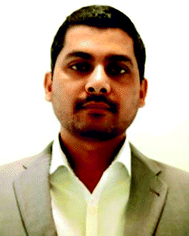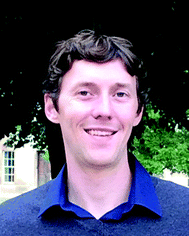Horizons Community Board Collection – Nanobiomedicine
Chandra Kumar
Dixit
*a and
Christopher M.
Proctor
 *b
*b
aQiagen Sciences Inc., 19300 Germantown Rd, Germantown, MD 20874, USA
bEngineering Department, Trumpington Street, Cambridge, CB2 1PZ, UK
Materials Horizons and Nanoscale Horizons set up their Community Boards several years ago, aiming to support early career researchers so that they can share their experiences and ideas on scientific publishing. As future leaders in their respective fields, the Community Boards also provide a channel for members to build relationships across their research community and develop their own editorial skills.
New in 2019, we are delighted to announce a new series of post-publication online article collections, led by our Community Board members across both Materials Horizons and Nanoscale Horizons.
Working together and sharing their unique areas of expertise, our Community Board members have recommended several key topics where significant, rapid progress has been made in the last 2 years. They have selected top articles published in the Horizons journals to showcase the most important advances in each topic area.
Nanobiomedicine
To kick things off, Chandra Kumar Dixit and Christopher M. Proctor present the first Horizons Community Board Collection on Nanobiomedicine.
Read the collection here.
Advancements in nanotechnology are impacting biology and medicine. In this themed collection, we are compiling some noteworthy articles in the areas related to targeted delivery, vaccines, diagnostics, wound healing, and self-healing scaffolds & materials. Theranostics, which is a new branch specifically dealing with point-of-care, involves diagnostics and therapy in a single agent. Carbon-based materials are proving to be effective agents in this quest, as indicated by Kapil Patel et al. in their research published in Materials Horizons (DOI: 10.1039/C8MH00966J). Anand et al. (DOI: 10.1039/C8NH00174J) emphasized in their review article the potential of carbon-based nanomaterials as antimicrobial agents. Scaffolds and matrices based on nanomaterials, as illustrated through the research works of Yu et al. (DOI: 10.1039/C8MH00647D), Singh et al. (DOI: 10.1039/C8MH01298A), Ooi (DOI: 10.1039/C7MH00373K), and Liu (DOI: 10.1039/C8MH00704G) have shown tremendous potential in surgery, wound healing, controlled release skin patches, etc. Given how all of these materials show potential in their respective fields, it will be important to see how these will shape the future of biomedicine. We hope that the readers find this themed collection informative and useful.
Chandra Kumar Dixit and Christopher M. Proctor
| This journal is © The Royal Society of Chemistry 2019 |


